''Closing Dubrovnik's Cable Car to Srđ Would be Loss for Everyone''
The City of Dubrovnik wants 30 million kuna and 30 percent of future revenue for the use of the popular Srđ cable car without a concession contract.
As Marija Crnjak/Poslovni Dnevnik writes on the 21st of March, 2019, the several year long ''argument'' over the concession of the Srđ cable car has escalated to the extent it has because the City of Dubrovnik filed a lawsuit against Excelsa nekretnine (real estate) owned by the Lukšić family, accusing them of the unlawful acquisition of money. The amount that City of Dubrovnik is seeking for the use of the popular cable car without a concession agreement is 30 million kuna, as Dubrovnik's mayor Mato Franković announced last week.
He also explained that DORH had given the company a deadline which is the end of this month to comply with the law of the Republic of Croatia, to pay a concession fee to both the City of Dubrovnik and to the state, and by April the 1st, they are obliged to sign a concession agreement with the City of Dubrovnik.
If this doesn't happen, the cable car will be closed because its use would then be illegal, Mato Franković said, adding that a new report showed that the concession fee of 15 percent is too low and the belief is that it should be 30 percent. At the next session of Dubrovnik's City Council, a proposal to annul the old motion and to propose a new one will take place. In an interview with Poslovni Dnevnik, Anto Rusković, the director of Excelsa nekretnine explained why a concession contract has not yet been signed and that the company will not agree to an even higher fee than the one which was previously proposed.
Do you admit that there is a 30 million kuna debt to the City of Dubrovnik? Do you consider that the city's claim is justified?
The City of Dubrovnik filed a lawsuit against Excelsa nekretnine in the amount of 20.1 million kuna, and Excelsa nekretnine will pay as much as is determined by a final court judgment. Given that such verdicts still haven't come to pass, and in order to ensure that the City will be able to be paid if the court's verdict goes in its favour, we have offered the City of Dubrovnik the appropriate means of securing its eventual receivables in good will. It should be stressed that, if [any debt] exists at all, then it has arisen because the City of Dubrovnik hasn't offered a conclusion to the concession contract to date.
Why has a concession agreement between Excelsa nekretnine and the City of Dubrovnik not been signed yet?
Excelsa nekretnine has applied for a concession, with the concessionary terms agreed with the City of Dubrovnik, filed in August 2015, while the City of Dubrovnik hadn't issued a concession decision in accordance with the agreed terms until April 2018. In the meantime, the city brought in and then revoked several concession-related decisions, and the last one from April 2018 hasn't yet been implemented. It's necessary to clarify that we have been seeking concessions since 2010, but we had to wait for the applicable legislation by the state. The law granting concessions to cable cars entrusted to local self-government units was passed in 2014 and then we started negotiations with the city, finally agreeing on the concession conditions in July 2015. Since then, the process has only become more complex and has led us to the situation in which we find ourselves today. If the concession contract was signed in 2015 as was agreed, the City of Dubrovnik would have got its concession fee the entire time and there would be no dispute today.
Is the closure of the cable car expected?
In the potential situation of the closure of the cable car, all sides will suffer significant losses, especially Excelsa nekretnine and its partners, since the work of the cable car provides jobs for a significant number of people.
Furthermore, if the cable car closes, the state budget will lose part of the tax revenue, and the City of Dubrovnik will not receive any revenue from the concession. It's important to note that since the beginning [of the work of the cable car] Excelsa nekretnine has contributed more than 122 million kuna in taxes and contributions to the state budget, predominantly based on the cable car's business.
We believe that the scenario of its potential closure should be avoided, but we're not in a position to make such a decision. Not only are we disappointed in the way the authorities are acting, but we're also frustrated by the fact that, unsuccessfully, we've repeatedly tried to solve this problem with a reasonable and rational approach. Unfortunately, this negative attitude towards investors will not contribute to improving the investment climate in Croatia.
Do you have a license from the Ministry of Transport to work on the lift and on what basis does has it been provided?
Excelsa nekretnine received approval from the Ministry of Transport for the carriage of passengers by cable car before the cable car even started working back in 2010. At that time, such approval was granted instead of a concession due to the long duration of the concession-issuing procedure, as is written in the very approval. Had Excelsa nekretnine not received explicit permission to carry out activities of the carriage of passengers by cable car, we wouldn't have even begun doing so.
The mayor has announced that he will seek 30 percent of the revenue in the concession contract, which should be signed by April the 1st. Are you ready to agree to that?
We still haven't had any insight [into that] and we don't have access to the new expert testimony mentioned by the mayor which points to the need to increase the fee by 30 percent, so we can't comment on it either. On the basis of the previous expert testimony, we can see that such fees, twice the amount previously agreed, is unfounded. The City Council already approved the concession fee in April last year. We consider that the City of Dubrovnik should send a contract under the previously agreed terms and end this whole situation, which has already been going on for far too long.
Make sure to follow our dedicated business page for much more. If it's just Dubrovnik and the extreme south of Dalmatia you're interested in, give Total Dubrovnik a follow.
Click here for the original article/interview by Marija Crnjak for Poslovni Dnevnik
Upcoming Works on Popular Zadar Tourist Attraction Will Cause Temporary Closure
The deadline for conducting the works on the top Zadar attraction is March the 31st, 2018.
Diocletian's Palace and its Most Visited Attractions
A little insight into the palace and its most visited attractions.
DIOCLETIAN'S PALACE
The Emperor, Diocletian constructed his retirement palace in about 300AD where he resided until his death. After his death, the palace became home to the various expelled emperors and their family. Eventually when the Avars and Slavs conquered the surrounding areas of Split, the city’s residents moved within the palace walls. More and more settlements were built within the palace and eventually the palace became the town itself. Today Diocletian’s Palace is considered one of the only cultural monuments in the world in which people still live. In the 17th century, a new defense system in the form of bastions was built around the palace by the famous Frenchman; A. Magli. Diocletian’s Palace is an example of the most magnificent Roman architecture on the Adriatic coast. It is important to mention that the palace also serves as a residential area today and is therefore open to all. Due to this, it is near impossible to control the flow of visitors to the site. There are many attractions within the palace, but the most viewed is the St. Duje Cathedral on the Peristyle square. Other popular sites are the Temple of Jupiter and the cellars of the palace. The narrow, crooked streets with various shops are also popular among tourists.

Aerial View of Diocletian's Palace
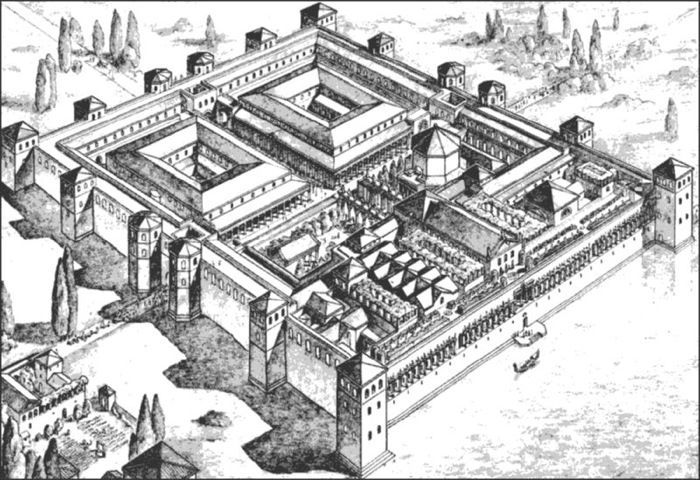
Drawing of the palace in its original plan
ST. DUJE (DOMNIUS) CATHEDRAL
The St. Duje Cathedral and bell tower is known as one of the oldest Catholic Cathedrals in the world and is located within the palace walls in the central square of Peristyle. The construction of this cathedral only began in the 13th century, long after the death of Emperor Diocletian as he was a persecutor of Christians. Ironically, this Cathedral was once the emperor’s mausoleum. The bell tower however, took about 300 years to construct. The cathedral has an octagon shape which is surrounded by a colonnade. Next to the entrance to the cathedral are is a black sphinx from 15 BC which was brought from Luxor in Egypt. In the cellar of the cathedral, tourists who enjoy historical religious artifacts can visit the treasury. Visitors can also climb to the top of the bell tower to enjoy 360 degree views of Split.
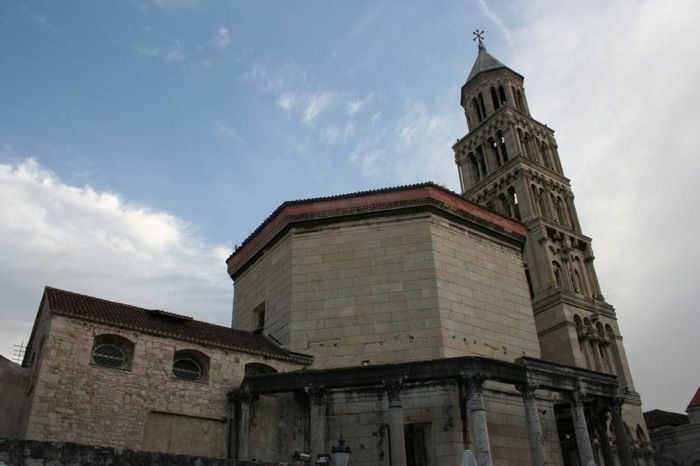
St. Duje's Cathedral and Bell Tower

Egyptian Sphinx
THE BASEMENT HALLS
The substructure of Diocletian’s Palace consists of many rooms and the wallwork as supporting walls for the emperor’s residents above. In the past, these rooms were of no use as they were under water. The seaside entrance to the palace allowed ships and boats to enter the through this gate, and anchor below the place and enter straight onto the Peristyle central square. Myths say that the persecuted Christians were left in this substructure in the small rooms, preventing the bodies from flowing out. In the 1850’s, architect Vicko Andric started a project which drained and cleaned the cellars of Diocletian’s Palace, and created a Riviera on the seaside front of the palace which is known as Riva today. Today the cellar is the main area for souvenir shops that lead to the stairs that go the Peristyle square and St. Duje’s cathedral. Other parts of the substructure are used as temporary art exhibitions or function spaces.
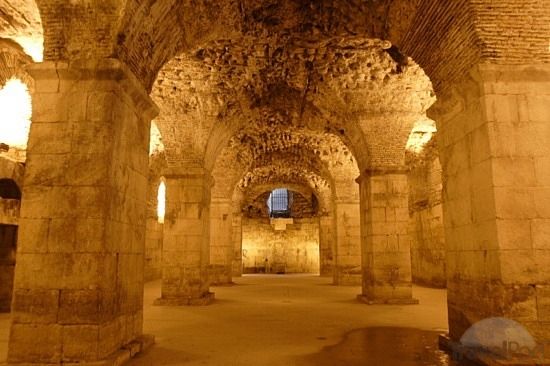
JUPITER'S TEMPLE
Jupiter was the name of Diocletian’s father and was also the highest Roman god. After the fall of the Roman Empire, the temple was converted into a Cathedral baptistery. Inside the small temple, there are two medieval stone coffins where the archbishops of Split, John and Luka are buried. Inside the temple there is a statue of Saint John made by the famous sculpture, Ivan Mestrovic. In the center of the temple there is a font basin which today is used as a wishing well as visitors throw coins in it. Originally, the temple never had a roof and this caused the rapid deterioration of the site due to environmental factors. The imposing arched ceiling has a series of face sculpured looking down on you. At the entrance of the temple, another Eqyptian sphinx can be found however, it has been vandalized and no longer has a head.
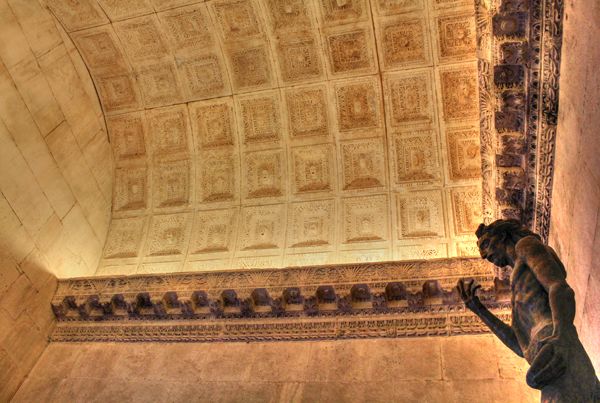
Interior pf Jupiter's Temple: Arched ceiling and statue of St. John
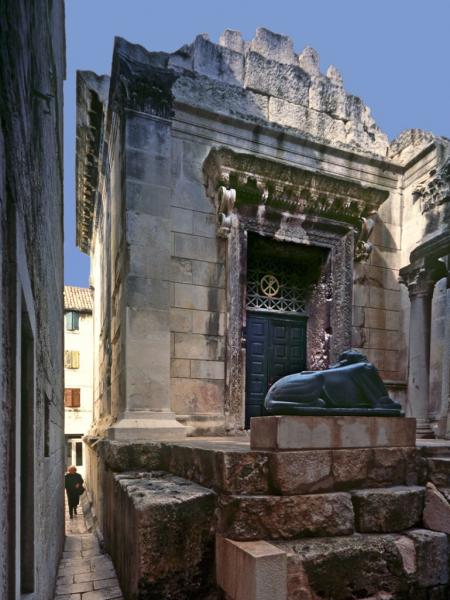
Jupiter's Temple with Headless Sphinx in Front
STATUE OF GRGUR NINSKI
The statue of Grgur Ninski, made my Ivan Mestrovic in 1929, is another well visited site for tourists. Previously, the statue was located in the central square of Peristyle but was moved in World War II, cut into three and dug underground to hide it from the occupying forces. It was re-erected outside the palace wall by the East, “Golden Gate” entrance. Grgur Ninski was the arch bishop of Split in the 10th century who also strongly opposed the Pope. Services were always held in Latin which was not understandable to the people of Croatia. Grgur Ninski then changed his services into the Croatian language which created more worship among the people as they understood their services and prayers. Some wearing has happened as it is believed that touching the toe of the statue brings luck. Over the years as more tourist visit the sight, it has been rubbed golden.
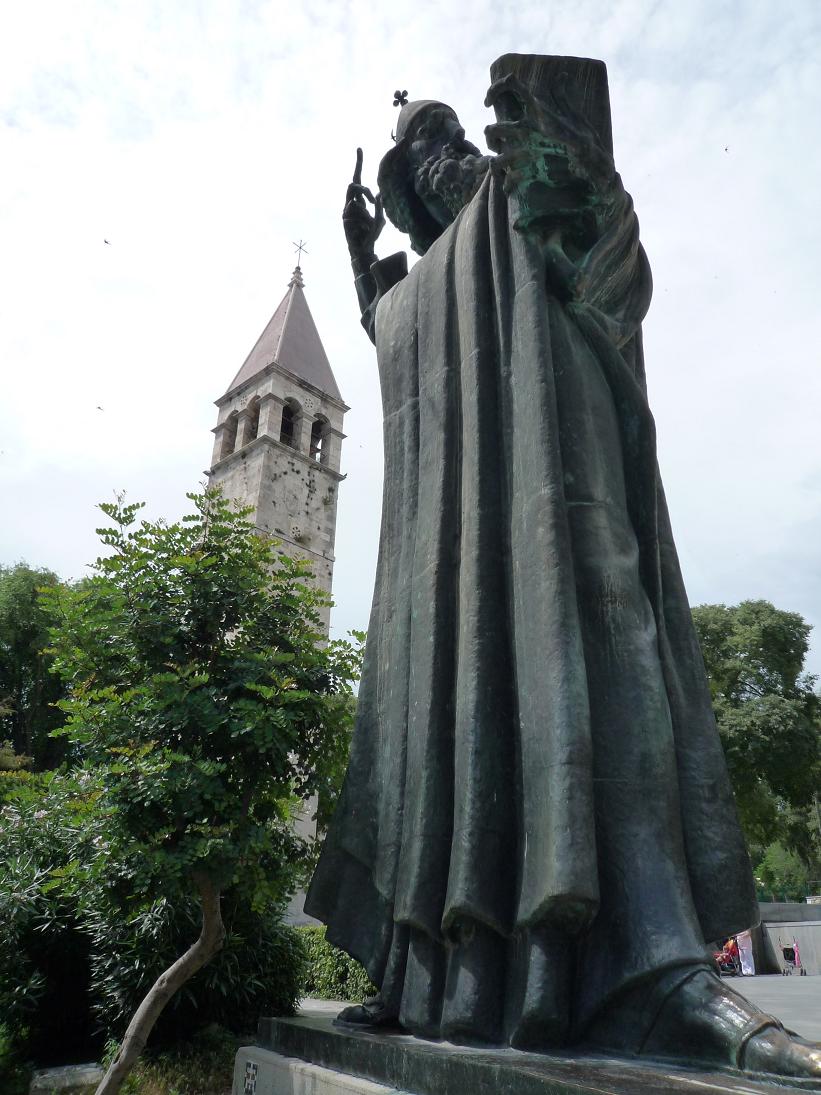
Statue of Grgur Ninski
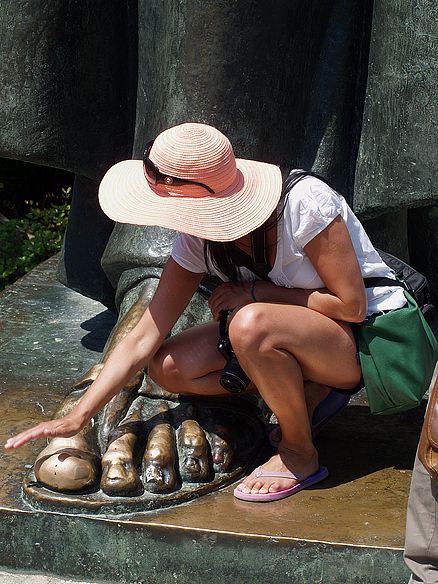
Make a wish!

